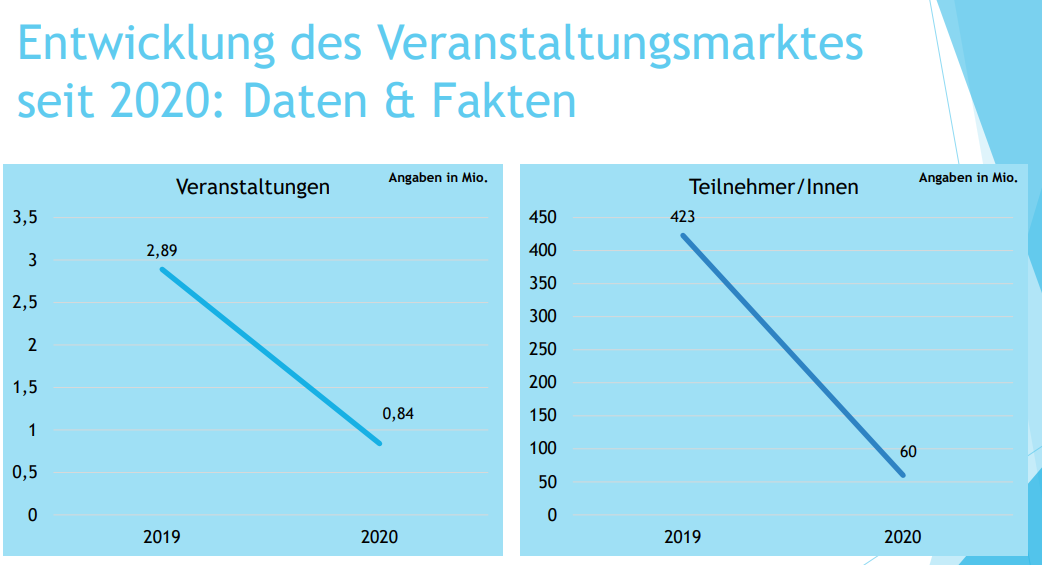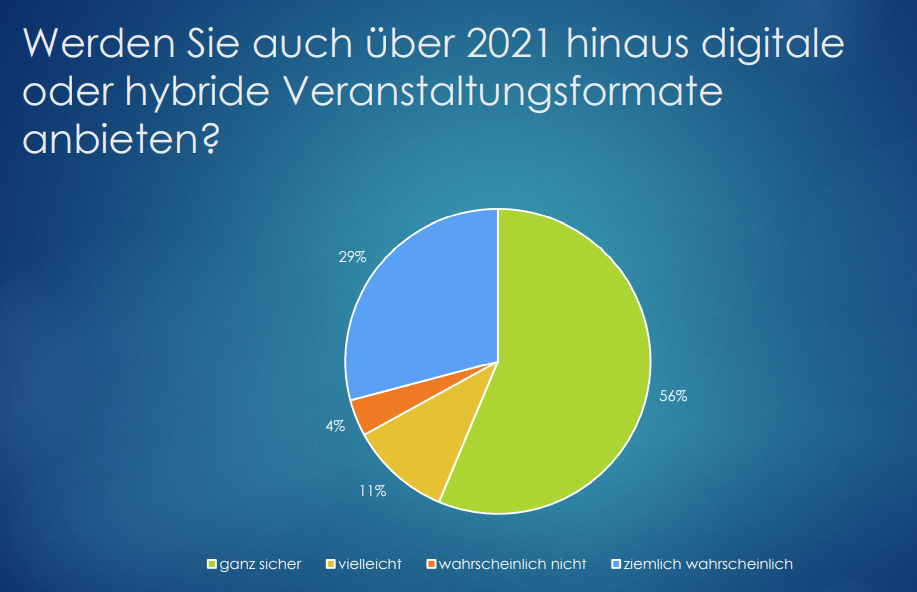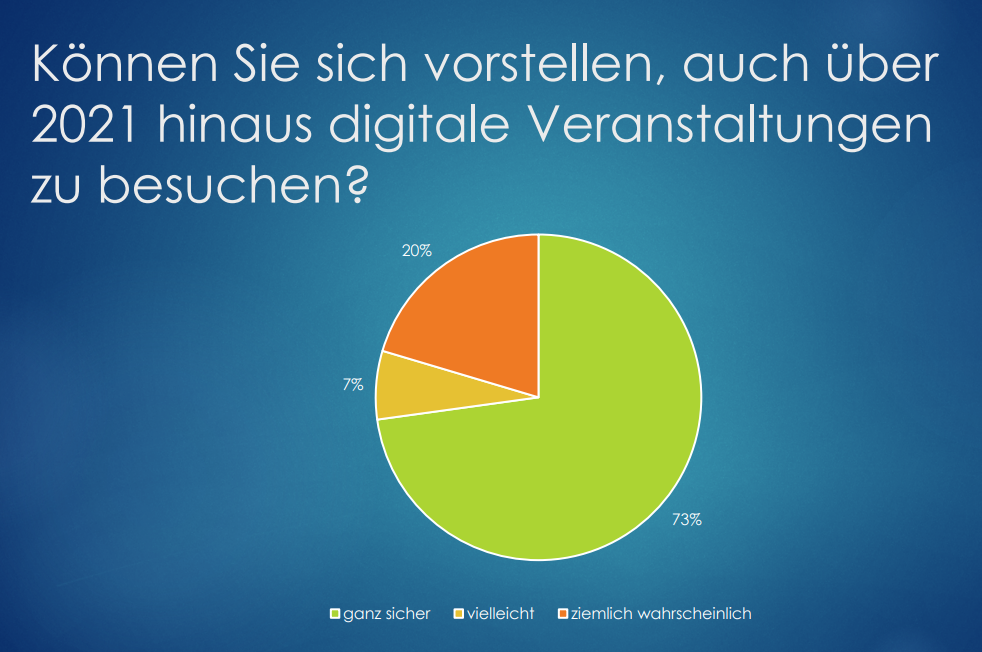Associations will continue to rely on digital events after the pandemic. Nevertheless, face-to-face events will remain indispensable.
A guest contribution by Stefan Kirchner
Lockdowns, masks, spacing, hygiene regulations: A lot has changed in the last two years. We are feeling the COVID-induced restrictions especially in face-to-face events. During the pandemic, there were significantly fewer events and the number of participants dropped sharply.
The loss of capacity in meeting venues was -73.1% in 2020

At the same time, the pandemic has also created a new market: Face-to-face events have been replaced or supplemented by digital events.
The trend toward digital also affects associations in particular, as they are one of the largest organizers of congresses, trade fairs, seminars, continuing education and networking events. In 2018, before the pandemic, 33 percent of all events in Germany were held by associations. In addition, associations are also participants in events.
The pandemic now raises the question of how (and where) we will meet in the future. I do not have a conclusive answer to this, but I do offer two theses: First, face-to-face events will continue to be a fundamental part of the association model. Second, digital events are here to stay.
Two-pronged approach
In the association sector, face-to-face events are primarily used to recruit and retain members. People meet in person, get to know each other, and exchange ideas. Even modern digital tools cannot replace this personal experience. For this reason alone, face-to-face events are an indispensable part of association work. However, they will increasingly be supplemented by digital events.
Associations have learned during the pandemic to drive on two tracks: In 2021, 80 percent of all association events were purely digital formats. On the one hand, organizers were not prepared to hold face-to-face events. On the other hand, participants did not want to attend face-to-face events either.
The crucial question is how this market will develop after the pandemic. To this end, we conducted a survey among decision-makers in 103 associations. The answers were clear.
2021 Trend Survey
Our survey found that 90 percent of the associations surveyed already have experience with planning hybrid or digital events. 85 percent say they will definitely or quite probably continue to offer digital formats beyond 2021.

In addition, 73 percent of respondents say they will definitely attend digital events beyond 2021.

However, 65 percent also said they want to return to face-to-face events as soon as possible. 38 percent want to supplement the face-to-face offering with hybrid components.
So the verdict is clear: associations can derive a lot of positive benefits from digital events. They increase planning reliability, are more sustainable, can be organized more quickly, and lead to more members participating in the events.
Challenges
The course is clear, but the road will be bumpy: Initially, digital events will not make anything "easier" or "more efficient," at least in the short term. That's because most associations still have little experience with digital events.
In this context, the job description of the "event manager" will change completely. Those who used to book venues and airline tickets will have to deal with server capacities, lighting and audio technology in the future. This is a challenge for the mostly small teams of the associations.
There are also questions about the monetization of digital events: Some associations, for example, have taken to offering good content free of charge. In a few cases, this may be worthwhile for marketing purposes, but in general, associations should not make the mistake of providing their expertise for free.
In terms of monetization, however, digital events also offer enormous opportunities: Digital products can be completely rethought. Events can be held more frequently, enabling sponsors to be activated at regular intervals rather than just once a year. They also offer the opportunity to market recordings and offer individualized one-on-one presentations to sponsors and members.
Conclusion: Keep your eye on the ball
I am firmly convinced that digital events will become established in the association sector. I am also convinced that after COVID, face-to-face events will again take place much more frequently. The many conversations I have with association representatives and our trend study also confirm this impression.
The relationship between the formats remains to be seen. Associations should now stay on the ball, build up digital skills and respond flexibly to market trends. After all, digital events above all offer many opportunities, and these must be exploited.







